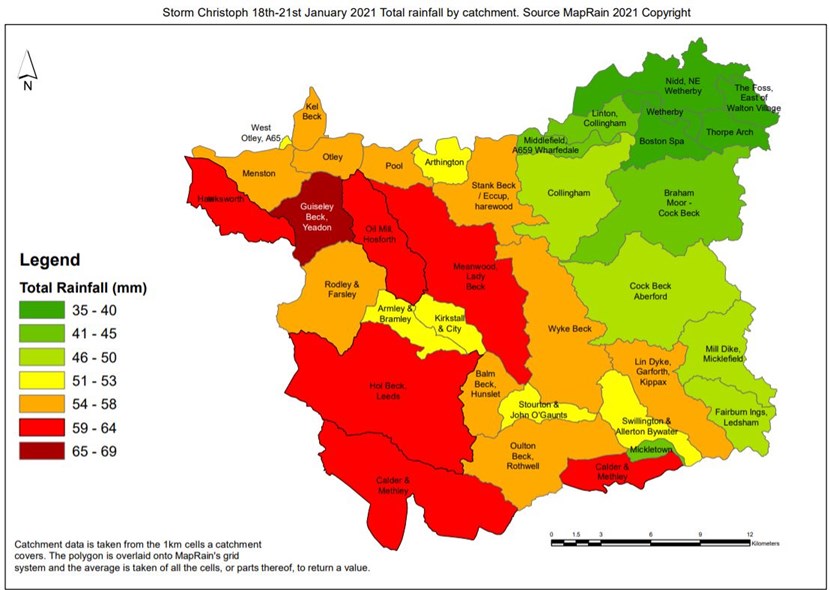
28 Jan 2021
Advice issued to residents and businesses in Leeds after close call from Storm Christoph
Following last week's unsettled weather caused by Storm Christoph, Leeds City Council is reminding residents and businesses about how to prepare and stay safe during a flooding event.
There are 5.2 million people at risk of flooding in England, with a recent poll suggesting that only a third of those know they are at risk.
And with increased rainfall linked to climate change, it’s likely that flood risk across the UK, including Leeds, will increase over time.
The good news is that there are some simple things people can do to prepare for flooding. Knowing what to do in a flood could help keep you and your family safe and save you thousands of pounds in damages and disruption.
Checking your property’s flood risk and signing up to free flood alerts from Environment Agency is a good first step to help identity if you are at risk. By registering for flood alerts, you will be notified if river levels in your area are increasing and what you need to do. Check your flood risk here and sign up for flood alerts here.
Preparing for a flood event is an anxious time so a flood action plan can be a useful checklist when you need to act quickly. This may include packing medicine and insurance documents in an accessible place in case you need to leave your house, turning off gas, water and electricity if you receive a flood warning and looking at the best way to stop water from entering your property. Flood barriers such as sandbags can be bought from DIY stores or you can make your own from tied rubble bags filled with water.
If you are at risk, you should consider checking your home insurance will cover the damage that may be caused by flooding. You can get insurance advice around flooding from the National Flood Forum here
You may also consider long term protection to your home. This is called Property Flood Resilience and includes measures such as temporary flood barriers, raising plug sockets, mounting radiators above possible water levels and installing flooring which can be easily cleaned. These measures help to reduce the risk of flood damage to your property, speed up recovery and help you move back into your property quicker after flooding.
The Yorkshire Flood Resilience website has a range of downloadable resources to help you build your property’s resilience.
Councillor Mohammed Rafique, executive member for environment and active lifestyles said:
“Storm Christoph is an important reminder that flooding is one of the greatest risks facing our communities. Flooding can not only destroy homes and businesses but the lasting effects on those affected, such as anxiety and depression, can last a long time after the water has left. Being prepared is the best way to mitigate the impact of flooding and there are many small things people can do should the worst happen. The first action is finding out if you are at risk. If you are, please visit our website as there is lots of advice and guidance out there for those that need it.”
ENDS
Notes to editors
The image shows the amount of rainfall in Leeds between 18th-21st January. During these four days, catchments in Leeds received between 35mm-69mm of rain. On average, in January, the East and North East area receives 71.4mm of rain in a month.
Leeds also receives rainfall from other nearby catchments.
Here are some useful links and numbers for flood-related services in Leeds:
- Flood warning service.
- Flood warning registration page.
- 24 hour Floodline telephone number: 0345 988 1188
- Report flooding here.
- Check your flood risk here.
- The Government’s health and advice guidance.
For media enquiries contact:
Leeds City Council Communications team
communicationsteam@leeds.gov.uk